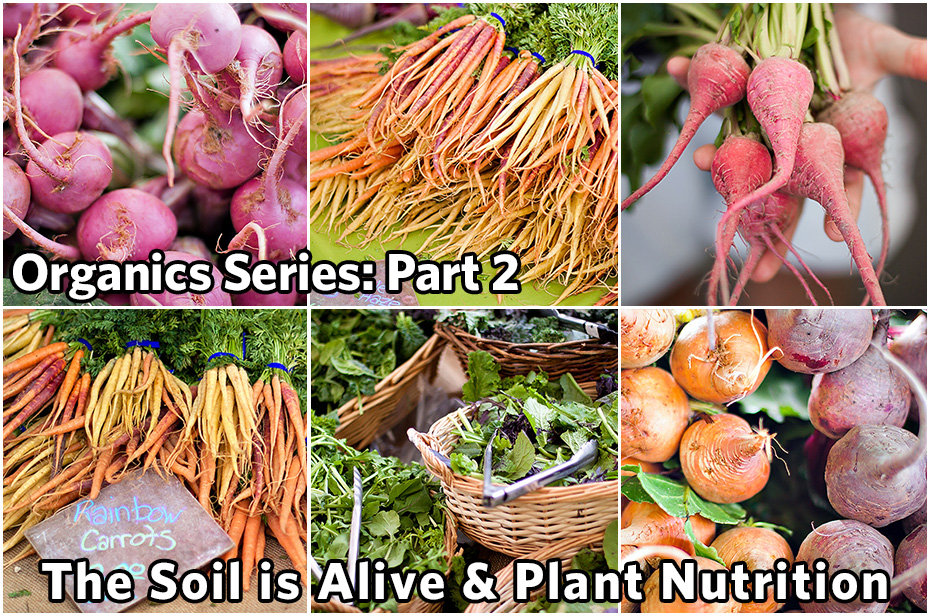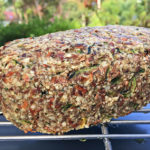Optimal physical and mental health in our human population is currently at its lowest in history. This is primarily due to poor and insufficient nutrition. Making smart dietary and lifestyle choices can make the difference between a quality of life with pain, sickness, fatigue, functional pathology and even disease, or progressing to the most advanced level of health, vitality and performance.
Foundation-wise to achieve optimal health, nutrition must be addressed first. Always. The food in your diet, and most importantly, the SOURCE of that food is what matters the most.
Without proper food and nutrition to “run” your body, the body will be under a constant nutritional stress and there is very little any supplement, nutraceutical, drug, etc. can effectively do, and often times just causes more stress to an already stressed system. I see it all the time in my practice. As soon as we get diet and food source right, the body begins to transform.
In Part 2 of this series, we’re going to look at the soil foundation these foods come from, and specifically, everything that is involved that gives plants nutrition and keeps soil fertile (alive).
As you’ll soon learn, if the soil is not fertile and healthy, the plants grown in that soil are not healthy. If the plants aren’t healthy, the animals eating the plants are not healthy. If the plants and animals are not healthy, the organisms at the top of the food chain are not healthy either — us.
The Soil Is Alive
Have you ever in your lifetime reached down and picked up a handful of dirt? If you have, you picked up an entire living ecosystem containing billions of microorganisms – or about the equivalent of holding the Earth’s human population, if not more, in the palm of your hand.
In fact, a gram of healthy organic soil can contain some 600 million microorganisms and tens of thousands of different species of bacteria and fungi, as well as organic and inorganic matter, air, water and water vapor that undergo complex, far from fully understood, chemical reactions (1).
To put that in perspective, a gram is less than the size of a penny. The soil is indeed alive and thriving with life!
We don’t directly see these microorganisms when we’re looking down at soil or holding some in our hand, but they’re there, and as you’ll learn, are extremely important to plant health and nutrition.
Usually the analogy I give when consulting is: imagine you and I are standing on the moon right now and we’re looking down at Earth. Would we see a single person of the 7 billion that are on Earth? No. But we know they’re there right? And we know that the world is a living, symbiotic ecosystem of all kinds of species, right?
The same goes for the soil, it is its own world within the Soil-Food-Web (2):
As you can see from the image, there are many players involved, and as we’ll look at in this article, they work symbiotically with plants to create the health and nutrition for the plant which ultimately ends up on our dinner plate. If the soil microorganism population is impaired (bacteria, fungi, etc), the plants are thus impaired… and all the way up the chain to us. Sir Albert Howard, considered by many to be the father of organic agriculture says:
The birthright of all living things is health. This law is true for soil, plant, animal and man: the health of these four is one connected chain. Any weakness or defect in the health of any earlier link in the chain is carried on to the next and succeeding links, until it reaches the last, namely, man.
Organic Soil – What Do Microorganisms Do?
The microorganisms in the soil perform a plethora of functions in the soil, creating a soil fertility that ultimately creates healthy plants. We’ll touch on the basic important ones that equate to the nutrition in plants, and thus, nutrition that ends up in your body for health (or lack thereof!).
Humus
Microorganisms create humus. Humus is organic matter consisting of partially decayed vegetable and animal matter that provides nutrients for plants and increases the ability for soil to retain water. Chemically, humus consists of numerous organic complexes, the major group of which consists of lignins and lignin derivatives, and of proteins; a minor group contains carbohydrates, fats, organic acids, alcohols and other carbon compounds. The formation and mutual inter-relations of these two groups of substances hold the key to the facts explaining the chemistry of humus(3).
In layman’s terms: humus is part of the plants macros and micros!
If you’ve ever seen a compost pile, that’s these microorganisms decomposing organic matter that we then add to our soil ultimately creating a healthy humus top soil. You can throw food scraps, leaves, weeds, and other organic matter into a pile and it will eventually transform from a pile of “trash” into what looks like brown dirt with no stench or rotting smell, but an earthy-smell, that is then added to the top soil.
In nature, for example, an animal will lay on the ground when it dies. This feeds the saprophytic fungi and other decomposers and returns the organic matter to the soil. Animals also poop on the ground..these decomposing critters love that too. Same goes for leaves that fall on the ground, plants that die, vegg and fruits that fall on the ground (food scraps), and more. This is Mother Natures recycling system, creating new organic matter top soil that these microorganisms essentially “metabolize” that’s filled with vitality and fertility (nutrition) for new plants to grow in again… and the self-sufficient cycle repeats and has repeated since the beginning of time.
The organic matter humus also holds water. Soil scientists report that for every 1 percent of organic matter content, the soil can hold 16,500 gallons of plant-available water per acre of soil down to one foot deep. That is roughly 1.5 quarts of water per cubic foot of soil for each percent of organic matter (4). The capacity for soil to hold water is important because we get what’s called “run off” and we lose our top soils (that contain the humus which provides nutrients to plants), as well as erosion from wind (think of a desert.. not too much growing out there, right?). Not to mention, we have a water shortage in the world right now that is not sustainable, and commercial farming is one of the biggest water wasters there is because as you will see, the humus is lacking in these soils:
Organically farmed fields on average have 5-6% humus, which is ideal for soil fertility. Yet in non-organic, commercially farmed fields, the humus has been shown to be 0-1.5% (5)
That is an 80-100% decrease in organic matter humus… and as we stated above, humus provides nutrients for plants and increases the ability for soil to retain water.
This ultimately disrupts this ecosystem and soil fertility, disrupting new plant health and nutrition for the plants, that ultimately reaches us and what we eat. As Lady Eve Balfour points out in her book, The Living Soil, “this change has resulted in our soil being seriously denuded of its humus content, with a consequent loss of fertility. History suggests that a decline in soil fertility is always accompanied by a corresponding decline in the vigor of the people who dwell upon it.”
In fact, results released from a 21-year study on organic vs. commercial farming in the British Soil Association’s report titled “Organic Farming, Food Quality and Human Health”, show that that the microorganism population responsible for soil fertility and delivering nutrients to plant roots was 85% higher in organically managed fields than in non-organically managed fields.
Also can be read: there are 85% less microorganisms in non-organic farmed fields.
Keep that statistic in mind as we continue to look at what these little critters do for soil health and fertility, and the overall ecosystem up the entire food chain to the food that ultimately ends up on our plates and in our body.
These certain natural food stuffs, when properly combined in the diet, supply all the food essentials, known and unknown, discovered and undiscovered, needed for normal nutrition, provided they are produced on soil that is not impoverished, for if they be proceeds of impoverished soil, their quality will be poor and the health of those that eat them, man and his domestic animals, will suffer accordingly
Sir Albert Howard
Mycorrhiza
Soil microorganisms, specifically certain fungi, are mycorrhiza formers which are rootlets that grow inside plant roots and they feed soil nutrients to plants. It is known that mycorrhiza proliferate in soil with a high organic matter content (i.e. humus), such as that supplied by manures and composts, and that they form symbiotic associations with plant roots (1). These mycorrhiza formations all excrete substances that appear to act as a stimulant to plant growth, as Paul Chek discusses in his book Under The Veil of Deception (6). He also states, “these VAM (vesicular-arbuscular mycorrhiza) fungi bring phosphorous, other minerals and water from the soil to the root and protect the root from parasitic nematodes and root rot fungi. Many agricultural soils that have received high inputs of chemicals (non-organic farming) are deficient in this component of the soil food web”.
Mycorrhiza fungi also excrete acids that liquify rock for its minerals and feeds those minerals to plants. Plants don’t suck up dirt for minerals… in other words, they don’t eat dirt or eat rocks. These microorganisms do the work to feed the plants via the roots, and symbiotically the plants produce sugars that feed the microorganisms. Happy little family.
Overall, the root uptake of nutrients is enhanced by mycorrhiza due to the large nutrient absorbing surface provide by the fungi. In this way and through the actions of other microbiological soil life, plants are naturally supplied with a whole range of nutrients that would otherwise be too distant, insufficiently supplied or physically unavailable for uptake by the plant roots alone. So in the organic system the biological activity within the soil is fundamental to the breakdown of organic matter and the delivery of the range and quantity of nutrients required by the crop(1).
So these mycorrhiza fungi formations work symbiotically with plants not only to feed plants via enhanced nutrient outreach and uptake, but protect plants from known plant parasites that kill plants, effectively working to boost the immune system of the plant.
Remember that statistic I quoted above: 85% less microorganisms (these kind of mycorrhiza fungi above) in non-organic soils.
Rhizosphere (Root Space): Vitamins, Minerals, Amino Acids, Hormones, and More
The rhizosphere is the root space within the plant/soil ecosystem. Almost every vitamin, mineral, micro-nutrient, amino acid, enzymes, hormones, etc. that is in our body, can be found in the rhizosphere of the plants, and these microorganisms are the “workers” that make a lot of this happen:
Some of the other functions microorganisms do for plants within the rhizosphere (5):
- Liquify minerals and convert non-organic compounds into organic compounds for the plants.
- Produce amino acids, organic acids, and an organometallic nutrients.
- 40-80% of the bacteria in a plants rhizopshere creates vitamins.
- Create numerous enzymes
- Create steroids and many other hormones
- Soil microbes produce NUMEROUS vitamins… everything you can find in a human body is found in the rhizosphere.
- Extensive research shows microorganisms perform chemical functions in the soil.. they can actually recreate nutrients in their body that are missing in the soil, and when they die or excrete, they re-balance the soils
Interesting…these microorganisms actually create vitamins for the plants. A lot like the microorganisms in our gut (what’s called microflora, or gut flora) and how they can create and synthesize vitamins… not to mention, aid digestion, create enzymes not produced by the body, produce lactic acid, stimulate peristalsis, are the first line of defense of your immune system, and so much more that is absolutely critical for our health.
In fact, did you just notice that?
Many of the chemical reactions and functions that occur in the microflora symbiotically with our own body, do the same sort of things symbiotically in the soil for the plants.
In a few words… they each create and maintain health!
Remember our favorite statistic above: 85% greater population of microorganisms in organic soils (i.e. 85% less in non-organic). Or another way of looking at it… 85% of the plants “gut health” (the rhizosphere) impaired & destroyed.
What would happen to our health if we wiped out 85% of the microflora in our own gut that do all of that (and much more) mentioned above? Would we be more healthy or less healthy? I think we all know.. not happy days.
The point is, if 85% of the microorganisms are wiped out in non-organic commercial farming practices, what does that mean for the health of the soil, and thus plants? If those microorganisms are not in the soil and doing EVERYTHING we’ve talked about in this post that they are designed to do and have been doing since the beginning of time, then the results of what they do is not in the plants. If it’s not in the plants it’s not in the animals eating the plants. If it’s not in the plants and animals…guess what? It’s not in us. Health and nutrition in foods does not magically come out of thin air. Healthy soil = Healthy people. And as you’ll see in Part 3 of this organics series, scientists and researchers found that soils were becoming nutrient depleted from non-organic farming practices all the way back in 1936.
All truths are easier to understand once they are discovered. The point is to discover them.
Galileo Galilei
In Summary:
As you can see, there is quite a bit involved that goes on in the organic soil that microorganisms are responsible for, and we barely scratched the surface in this blog article.
In this part of the series, we needed some of the basic soil science so we know what these microscopic critters actually DO!
We have to remember that LIFE comes down to principles of microbiology and how symbiotic microorganisms play a critical part in our own health (gut health we touched on), as well as the health of the plants… and in order to truly understand health and nutrition, you must understand where it comes from foundation-wise.
So what have we learned so far:
- There are 600 million microorganisms in one gram of organic soil composed of tens of thousands of species
- Microorganisms create humus, and humus regulates nutrition, water, and more for plants that is in integral part of the wheel of life Mother Nature has created.
- 5-6% humus is ideal and found in organic soils, yet on non-organic commercial soils, it’s 0-1.5%, or an 80-100% loss.
- Mycorrhiza formers feed plants minerals & nutrition, as well as act as an immune system for the plant.
- All the vitamins, minerals, amino acids, hormones, enzymes, fats/oils, carbohydrates/sugars, and more are found in the rhizosphere… the same stuff in our body that we’re made out of!
- Microorganisms re-balance soils with nutrients
Yet 85% of the microorganism population responsible for doing all this above, on average are destroyed on non-organic farmed soil!
If those things aren’t in the soil (vitamins, minerals, etc.) then they’re not in your food. If they’re not in your food then they’re not in your body. And if they’re not in your body… well, just look at the state of our “health” in the world today and ask yourself: Are we healthy?
When you ask yourself, where does nutrition actually come from? When you trace it all backwards to where it all starts, we see that health begins in the soil and the symbiotic ecosystem living within it.
Stay tuned for the next part of the series 04/07 – Non-Organic, conventional Farming.. The history, comparisons to organic and more. We’ll cover how the concept of conventional farming started, from Liebig’s theory in 1840 about mineral salt (fertilizer) application to crops as the only thing plants need for health, up to soil scientist’s ignored plea with congress in 1936 that the soil is dying, to where we’re at today. Once we have a basis for conventional farming, we’ll then look at and compare it with organic farming, the studies between the two, and much of what we discussed here in Part A… tying it all together to what it means for your most optimal health, vitality and performance.
Hope you enjoyed the mini-course on organic soil, soil science and plant nutrition!
If you missed part 1 of the Organics series, you can read it here.























This is incredibly interesting, wow. I had no idea about how the soil works like that. Great post Jon, I’m impressed.
Cheers Heather, appreciate and glad you enjoyed
Good stuff man, breaking it down! I knew about micro organisms but had no idea all the stuff they actually do for plant health
A lot of people don’t Dave. To my knowledge they don’t teach this in universities for any health or medical-related degree, only specific soil science, biology and/or botany-type degrees. Yet, to truly understand food and prescribe it for health, how can you effectively do that if you don’t know how nutrition gets in food, or vice versa is absent from food because the “system” that provides that nutrition is impaired (kill off microorganisms, no humus, etc). You don’t need to be a botanist, but basic basic basic soil science 101 knowledge like in this post is necessary so we have an understanding and respect for what microorganisms do for our food. Most people simply do not know, including the professionals prescribing health…
I missed this when you posted it originally and just got a chance to read it from your latest instagram post. I really knew none of this. Great info Jon, thank you. I’m looking forward to the next part of the series.
You’re welcome Grace, happy you enjoyed the education
thank you for covering this topic. A lot of people I see are so tied up in the magazines and counting their calories that they have no idea about the quality of the food they are putting in their body. They think they’re eating “clean eats” but really the food isn’t clean at all. This article rocked Jon, thanks again on the education.
Cheers, you bet Matt! Great insight as well.
I just got done reading this entire series and I loved it! Part 4 was really great with saving money on organic foods. I’ve got my shopping list ready to implement the tips!
Excellent Melissa!